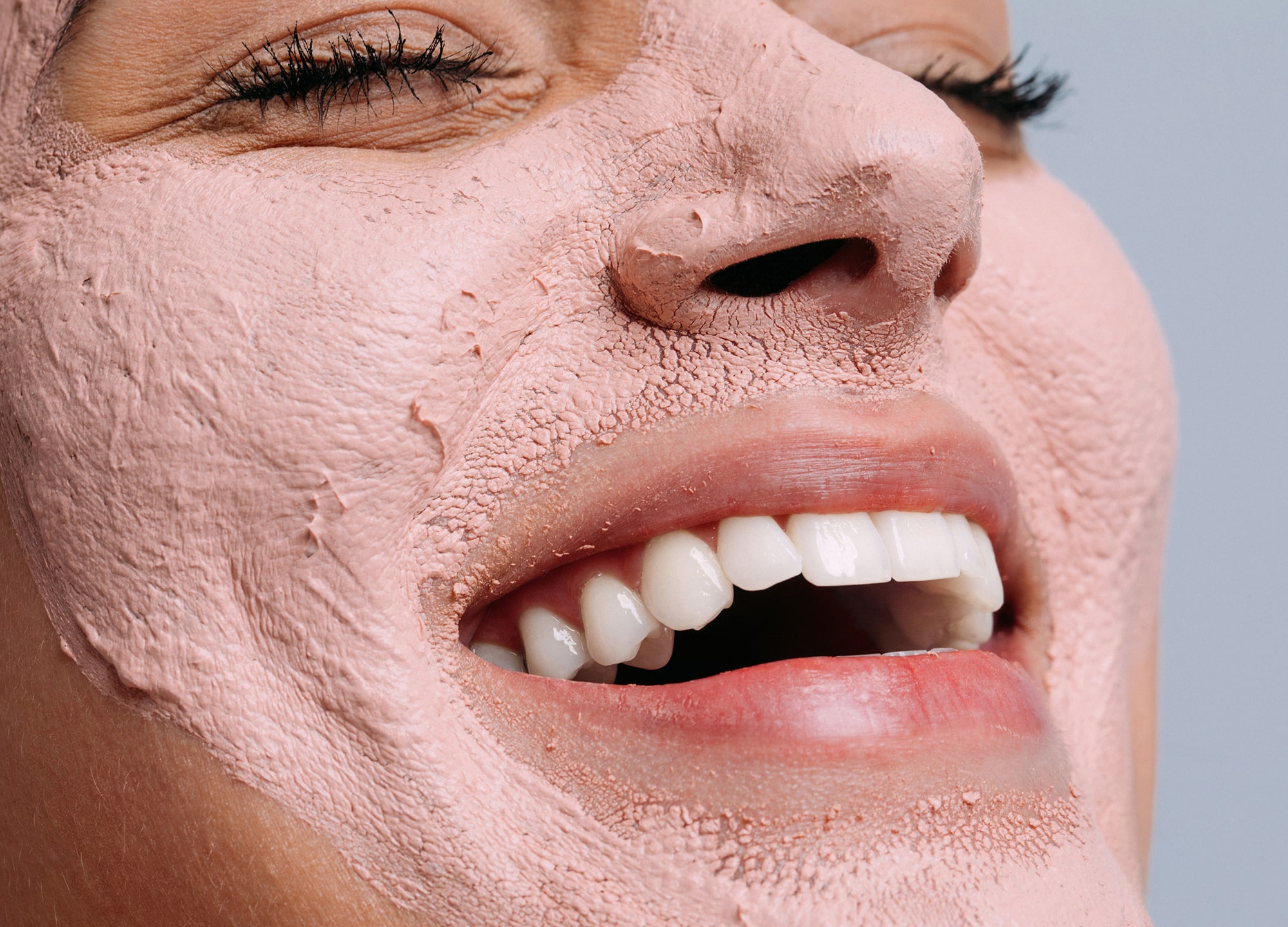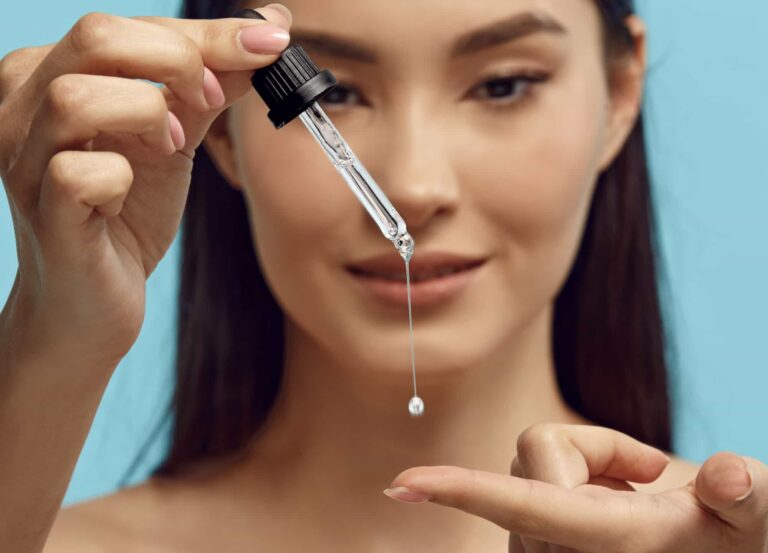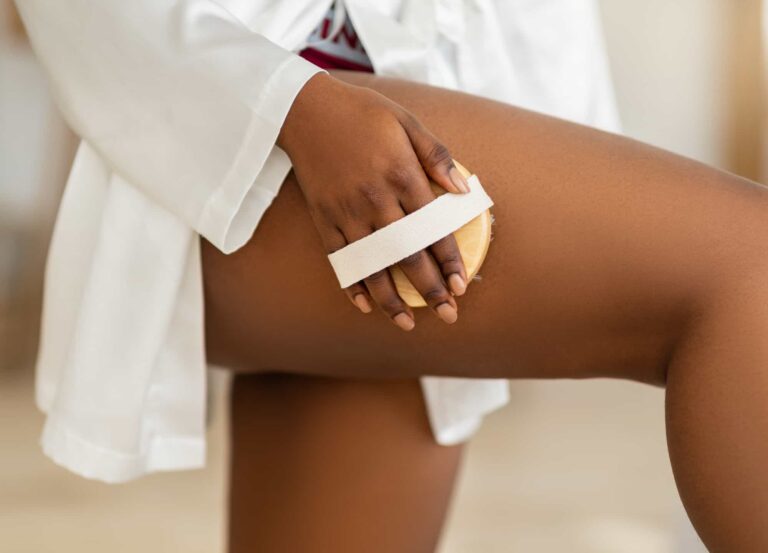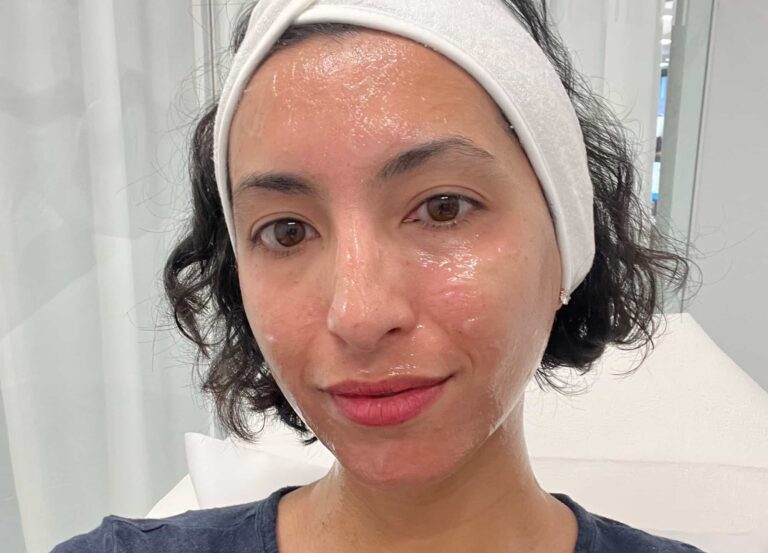Although blackheads are not as conspicuous on the face as whiteheads or cystic acne, they’re still a pesky obstacle in many people’s path to clear, beautiful skin. Considering that most people have had to deal with these mysterious black dots during their lifetime, we asked three pros to explain what blackheads are, why they form, how to get rid of them, and what can be done to prevent them. Read on for tips on the best in-office treatments, powerful blackhead-fighting ingredients, and popular methods you should definitely avoid when treating this special form of acne.
What are blackheads?
Acne is generally grouped into two categories: comedonal or inflammatory. “Comedonal acne consists of blackheads and whiteheads, while inflammatory acne includes any pimples or cysts that are inflamed—red bumps, pus bumps, and tender under-the-skin bumps,” explains New York City board-certified dermatologist Hadley King, MD.
Blackheads are small bumps that appear on your skin due to hair follicles clogged with oils, bacteria, and dead skin cells. “These bumps are called blackheads because the surface looks dark or black [due to] the oxidation of the oil with air,” says NYC board-certified dermatologist Sapna Palep, MD.
Where can you typically find them?
Areas with larger pores and more oil production are more likely to have blackheads. “They typically appear in areas containing more hair follicles, such as on the face—especially on the nose and chin—as well as the back, shoulders, neck, and chest,” says Charleston, South Carolina, board-certified dermatologist Marguerite Germain, MD.
How can you get rid of them?
There are multiple in-office treatments available to get rid of blackheads. “[You can get rid of blackheads through] manual removal or extractions performed by a board-certified dermatologist as well as in-office treatments including microdermabrasion, chemical peels, laser and light therapies,” says Dr. Palep.
“Treatments that exfoliate the skin and cleanse the pores, like the DiamondGlow or the HydraFacial, can help eliminate blackheads, and regular treatments can prevent their recurrence,” says Dr. Germain. “The DiamondGlow treatment works to eliminate blackheads through the use of pneumatic suction that painlessly extracts gunk and sebum from the pores. The HydraFacial uses Vortex-Fusion vacuum technology to dislodge impurities. Both treatments also involve the infusion of different serums into the skin, many of which contain chemical exfoliants that help to unclog the pores and prevent blackhead recurrence.” Additionally, a doctor or aesthetician can also provide extractions, to remove individual blackheads one by one with sterile tools that reduce the risk of further irritation or infection.
Chemical peels and lasers are also a great option when trying to destroy blackheads. “Chemical peels with salicylic acid can also be helpful and can use stronger concentrations of salicylic acid compared to over-the-counter options,” explains Dr. King. Beta hydroxy acids (BHAs), like salicylic acid, are similar to alpha hydroxy acids (AHAs) in that they are used for chemical exfoliation of the skin. They dissolve the bonds that hold dull, dead skin cells on the surface of the skin so the skin will gently shed, revealing smoother, brighter skin underneath. The difference is that while AHAs are water soluble and work on the surface of the skin, BHAs are oil soluble and can penetrate into pores so that they are able to work on the surface of the skin as well as inside the pore. Additionally, “a device called the Aesthera Isolaz [can also] offer gentle vacuum pressure to clear pores, combined with intense pulsed light to help decrease redness and inflammation.”
What can you do to get rid of blackheads at home?
While there are plenty of at-home options to help diminish blackheads, squeezing them out yourself shouldn’t be one of them. “Squeezing blackheads can traumatize the skin, introduce bacteria and damage the pore, which can spread debris and bacteria deeper into the tissue,” says Dr. King. “The risk for inflammation, infection, and scarring increases.”
Pore strips are another popular product to help remove blackheads around the nose, but they can cause irritation and aren’t effective in preventing new blackheads from forming. “Pore strips can temporarily remove top layers of dead skin cells and blackheads by using an adhesive, but they won’t do anything to prevent the buildup of blackheads,” says Dr. King. “And the adhesive can cause irritation or traumatize the skin, so be sure to use carefully and follow the instructions.”
Last, a comedone extractor has also been used to remove blackheads at home—and while it’s not your safest option, it’s a better bet than squeezing them out yourself or using a painful pore strip. “Unlike squeezing, the comedone extractor does not compress the sides of the pore, so there is less risk of breaking the pore walls,” says Dr. King. “However, tissue damage may still occur, so it’s important to be very careful if you’re attempting this at home.”
When using a comedone extractor, Dr. King advises to cleanse the skin with warm water before applying a warm, damp washcloth over the area for 10 to 15 minutes. Then use an alcohol-soaked cotton pad on both the skin and the extractor, to disinfect them. Place the loop of the tool so that it encircles the black dot of the blackhead and apply slow and even pressure lightly across the area. If the blackhead pops out, then clean and disinfect the skin and the extractor. If it doesn’t pop out with light pressure, don’t continue to press and dig—at this stage, you are likely to do more harm than good.
Ultimately, treating and preventing blackheads at home is best achieved through exfoliating products and ingredients. “Exfoliation is key in order to facilitate healthy removal of dead skin cells—some patients with oiler skin might tolerate a physical exfoliant like a scrub, while those with dryer or more sensitive skin should stick to a less-irritating chemical exfoliant, like salicylic or glycolic acid,” explains Dr. Germain. While these ingredients can also be found in in-office chemical peels, they’re still safe to use at home, especially since they’re not as strong in over-the-counter products. “Salicylic acid is able to penetrate into the pore and loosen the blackhead, while glycolic acid can unclog the pore on the surface. Both are great as a part of weekly maintenance to achieve clear skin.”
Dr. King recommends trying benzoyl peroxide or adapalene. “Benzoyl peroxide has mild comedolytic properties compared to salicylic acid but also has other acne-fighting properties, like antibacterial powers, which make it a great choice for both comedonal and inflammatory acne,” she says. “I also recommend an over-the-counter adapalene gel, like AcneFree Adapalene Gel ($12). Adapalene is a topical retinoid that has a comedolytic effect, meaning that it helps to prevent and treat clogged pores. This is because it increases the turnover of skin cells and reduces the tendency of cells and keratin debris to clump together and clog up pores.” That’s not all: retinoids can also help decrease the discoloration that can be left after a pimple—and because they increase the turnover of skin cells, this reduces the healing time for acne.
How can I keep more blackheads from forming?
Although there’s no way to permanently get rid of blackheads for good, “oral retinoids, like isotretinoin [or Accutane], can reduce the number of oil glands you have more permanently,” explains Dr. Palep. Dr. King also recommends oral contraceptives. “Many oral contraceptives decrease sebum production, so there will be less oil to clog up pores,” she says.
Also avoid using products that can irritate the skin, like alcohol, peppermint, menthol, lemon, lime, or eucalyptus. “Also, certain oils can actually stimulate more sebum production, leading to more blackheads,” says Dr. Palep. Steer clear of comedogenic ingredients, like coconut oil and cocoa butter, and refrain from using oil-based makeup and skin-care products. It’s best to “avoid wearing tight clothing against skin that’s prone to developing blackheads, especially in a hot, humid environment or while sweating,” suggests Dr. Germain.











